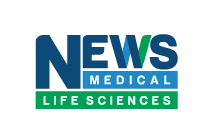Image credit: AZoNetwork – News-Medical.net
As part of their ‘insights from industry’ series, News Medical sat down with David James of J+D Forecasting to uncover insights for their readers and find out What is pharmaceutical forecasting?
Please could you provide an overview of what pharmaceutical forecasting is?
Pharmaceutical forecasting sounds very niche and specific at first. In reality, it is a business-critical activity across a broad range of stakeholders which supports a range of key business decisions.
Each of these decisions needs a specific forecasting approach to provide the right information at the right time and in the right format. Then, presented in a way that allows people to make the right decisions. Which is not an easy process but an essential one.
“Generally speaking, a pharmaceutical forecast needs to model both a disease and a healthcare system, and the key to doing this well is using the available data to reflect this complexity in a way that supports effective decision-making.”
There is a lot of data involved, but for that data to be valuable, it is important to consider how it is used, integrated, and delivered. Making the right decisions with the right information and insights will always be key for any business. The challenge is to bring all these different elements together.
So, as you can see, it is a broad rather than niche discipline spanning a range of business areas that all require their own specific insights to underpin good strategic and operational decision-making.
Can you explain J+D Forecasting’s background in pharmaceuticals?
When J+D Forecasting was founded, we felt that there was a clear need for a more evidence-based approach to decision-making underpinned by a robust forecast. It was true to say that there were no companies out there that were solely focusing on this. So, we decided to bring together a team of experts that could help improve client forecasting processes and address the many pain points that they were telling us they had.
“Previously, forecasting was seen as a laborious process and one that did not ultimately support the final decision, which tended to rely more on gut feel rather than evidence. It was definitely not the intellectual process we felt it should be.”
So, from day one, we were looking for better ways to do things. Ways in which we could remove the mundane and free up our clients to think about and communicate their forecasts.
Historically, ownership did not sit within specialist Forecasting teams but was managed by departments such as Business Insights or even Finance functions. So, it was necessary for us to focus on areas such as upskilling, process optimization, and atomization. We made user-friendly forecast models that reflected the decisions they were supporting and embedded best practice forecasting principles within them.

The Growing Importance of Forecasting Expertise in Pharmaceuticals
Forecasting is considered a business-critical tool for planning and development within pharmaceuticals, but many lack the time or methodologies to train forecasters effectively inhouse.
How is forecasting the pharmaceutical sector different from others, such as FMCG?
Pharmaceutical forecasting is a lot more complex than most other sectors because it involves modeling a disease and a complex supply chain. Both of which vary widely. No two diseases or countries behave the same, and often treatments within the same disease will need to be modeled differently.
The majority of pharmaceutical forecasts will use some form of patient-based approach rather than using sales data, primarily because it provides a greater understanding of the causality of market changes. This is both more complex to model and requires a lot of data.
Forecasting a pharmaceutical market requires a high degree of expertise, even more so because creating an overly complex model is a barrier to good decision-making. We have invested significantly in making the models we design user-friendly. As far as forecasting models for the pharmaceutical industry are concerned, our models are very simple to use yet retain the complexity to model any disease in any market.
How has the field of pharmaceutical forecasting changed over the last few years, particularly in the wake of the COVID-19 pandemic?
The field of pharmaceutical forecasting has changed significantly over the last few years. Until recently, forecasting did not have the same level of investment as other business-critical functions. However, as the pharmaceutical sector has become more mature, the focus has shifted towards more niche and rare diseases, which are more complex and challenging to forecast.
Within these diseases, the value of each patient is much higher, and therefore the margin for error is much less. So, it has been necessary for companies to invest more in their forecasts and in the data that drives them to ensure that they are generating the accuracy needed.
The other big shift has been the digitalization of forecasting. Historically, forecasts used Excel-based models sent out to stakeholders over email, with PowerPoint the delivery method of choice. This made for a disjointed process that was time-consuming and error-prone, with expensive resources needed.
However, over the last few years, the market has shifted towards digitally driven, cloud-based platforms, providing better collaboration and more rapid delivery of forecasts. This transition has been turbocharged by the COVID-19 pandemic as working from home became the norm.
As pharmaceutical companies start using technology in other parts of their business, the development of drugs will become quicker. Identifying the right compounds with the right profiles for diseases will improve because companies are now using innovative technologies like artificial intelligence (AI) in clinical trials and data analysis.

Tips for Forecasting Therapies in a Covid-19 World
Written March 2021.
Learn more about forecasting therapies in a Covid-19 world. Tip 1: Look at the market from a patient perspective…
How has J+D Forecasting stayed ahead of these changes?
J+D Forecasting has invested heavily in bringing technology into the forecasting sector. Forecasting can be an incredibly time and resource intensive process. So, we have been very aggressive in bringing major technological advances into our products to streamline each step, creating a seamless end-to-end process.
“One of the benefits of being a specialist forecasting organization is that we understand the challenges our clients face and can quickly adopt technology to address them.”
However, technology, for technology’s sake, does not bring value, so everything we bring to market is underpinned by our deep knowledge of pharmaceutical forecasting and the forecasting process. We always ask ourselves; How does this help our clients? What pain points are we addressing?”
An example of this expert-driven innovation is that we have kept Excel as the forecasting tool because we know it is still our client’s software of choice for modeling. To add value, we utilize other technologies, such as MS Teams and Power BI to make it work at the center of a cloud-based forecasting process.
What are J+D Forecasting’s flagship product lines and services?
The flagship product of J+D Forecasting is a cloud-based forecasting solution called FC365. Cloud-based technology makes forecasting a lot more efficient by streamlining the process, delivering automation, integration, and driving better collaboration throughout an organization.
Within FC365, we have utilized the Microsoft 365 technology stack to create a platform that overcomes many forecasting challenges. This platform is built in a modular way, so combines seamlessly with our range of Excel add-ins (FC+). The modeling of any disease can be done in a fraction of the time, delivering best practice forecasting principles.
We have invested heavily in overcoming the challenges found with using Excel alone as a forecasting tool. Additionally, we know that moving the entire forecasting process into the Cloud can create problems around flexibility, usability, and familiarity. So, we have also addressed this within the FC365 design to provide a place where forecasters can work independently, with familiar tools, and gain efficiencies.
One key challenge to implementing a new forecasting system is adoption, with the need for dozens, if not hundreds, of stakeholders to learn a new approach. By using familiar, in situ Microsoft apps, we are already one step ahead of our competitors, meaning we can spend time upskilling forecasting capabilities rather than intensely training stakeholders on new external software.
What advantages does FC365 offer over other enterprise solutions?
The main advantage of FC365 is that it is specifically designed for pharmaceutical forecasting. Most other cloud-based systems are generic platforms designed for all industries and the varying types of forecasting within those industries. These platforms do not work as well as FC365 because the pharmaceutical sector is unlike any other industry due to its complexity.
There are some other available solutions that are designed specifically for the pharmaceutical industry. However, these are not Excel-based and so do not work very well because of their lack of flexibility.
FC365 is beneficial for clients because it delivers the insights needed for the forecasting processes. Excel at its core makes it extremely flexible, so users can modify an existing model or build new models with ease. With the Power BI reporting functionality incorporated, clients can easily generate their reports rather than asking us to do it for them.
J+D Forecasting’s platform installation ensures that the forecasting data does not leave the client’s own IT environment, keeping it secure. Thus, removing a major hurdle for successful implementation.
What challenges currently face pharmaceutical companies, and how can J+D Forecasting help?
The challenges that pharmaceutical companies face are ever-changing and not necessarily universal, widely varying by therapy area, region, or type of business. For big pharma, the pressure on pricing continues through regulation and generic substitution, as well as the need to fill the pipeline with innovative compounds. For innovative small Biotech, the challenging economic environment is increasing scrutiny from investors to deliver value.
These challenges only increase the importance of making good evidence-based decisions quickly, and that is exactly what we started J+D forecasting to achieve.
“Technology means that we can automate much of the process and deliver the required insights quickly, but underpinning the technology, there has to be a well-built model that drives good forecasting practices.”
Making better decisions is one way in which we support our clients, but as healthcare systems look to drive down costs, our clients are looking to use technology to become more efficient.
Historically, forecasting has been very manual and resource intensive, but this is changing rapidly, and J+D has been quick to adopt technology to streamline the process. For example, our FC+ software means that even the most complex model can be built in a fraction of the time, and our FC365 platform provides real-time updating, consolidation, and reporting.

FC+ Forecasting Software Just Got Better.
Enjoy new software features in one click and gain
even more with P&L Risk Assessment functionality.
How does J+D Forecasting plan on developing its solutions in the future?
J+D Forecasting will carry on investing in the needs and demands of our clients. Our forecasting platform is well established, but we continue to evolve it and each iteration adds functionality and features to deliver even more value.
J+D Forecasting is also building additional project management capabilities that will help clients significantly. In the future, the platform will focus on advanced analytics such as sensitivity and goal seeker analysis.
Eventually, FC365 will start bringing in other data sources so that clients can apply AI to both explain and predict performance. The platform will be able to inform clients about what they did well in the past and then apply this learning to what they should do in the future.
This interview was originally published in News Medical on January 13th 2023.
About J+D Forecasting.
From bespoke pharmaceutical forecasting models and innovative software, to interactive training and resources, we have the solution to your forecasting needs. At J+D we work alongside Pharmaceutical Forecasters, Analysts, Business Insights Managers and Marketing Departments to create models that meet the needs of both individuals and pharmaceutical companies. We balance market complexity with easy to use yet innovative technology, underpinned with the best pharmaceutical forecasting principles.
About David James.

A respected expert in the field of pharmaceutical forecasting, providing both training and consultancy to solve global forecasting challenges. As founder and CEO, David has led J+D Forecasting to become one of the leading providers of pharmaceutical forecasting solutions to some of the largest brands in the market.
A respected expert in the field of pharmaceutical forecasting, providing both training and consultancy to solve global forecasting challenges. As founder and CEO, David has led J+D Forecasting to become one of the leading providers of pharmaceutical forecasting solutions to some of the largest brands in the market.





